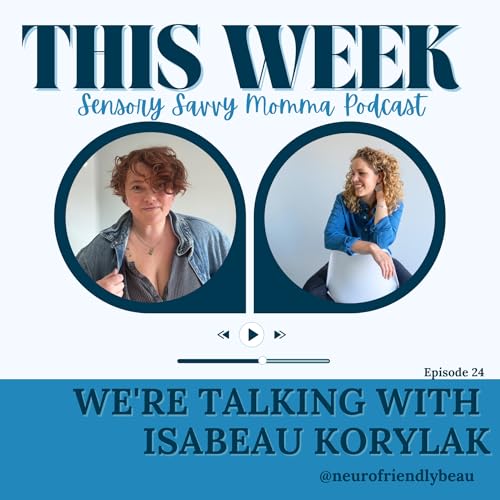Screen Time Without Meltdowns: How to Create Calm, Smooth Transitions for Neurodivergent Kids If screen time feels like a double-edged sword — lifesaving for your sanity but meltdown-inducing when it’s time to turn it off — you’re not alone.
In today’s episode of Sensory Savvy Mama, we’re talking about screens, sensory needs, and how to use technology intentionally without guilt, shame, or chaos.
This is not an anti-screen episode.
This is a compassion-first, nervous-system-first approach to using screens as a tool — especially for neurodivergent kids who feel safe, regulated, and predictable when they’re watching or playing.
The Sensory Breakthrough (NOVEMBER ONLY) A low-demand, high-value personalized sensory insight report. No Zoom calls. No appointments. You answer two forms → I send you a custom sensory analysis of your child: strengths, challenges, and their unique neurosignature.
➡️ Grab your spot here (CLICK HERE)
In this episode you’ll learn: ✅ Why screens feel regulating for so many neurodivergent kids ✅ The real reason meltdowns happen when screen time ends ✅ How to set clear, respectful boundaries without power struggles ✅ What to do before, during, and after screen time to make transitions easier ✅ How to use screens intentionally — without mom guilt ✅ Why “just turning it off” almost always backfires ✅ What co-regulation and predictability have to do with screen-time peace
Whether you avoid screens like the plague or rely on them for survival (no judgment here), this episode gives you a grounded, sensory-smart plan for:
✨ fewer battles ✨ smoother transitions ✨ safer nervous systems (yours and your child’s) ✨ and a whole lot more connection
Links & Resources
The Sensory Breakthrough (NOVEMBER ONLY) A low-demand, high-value personalized sensory insight report. No Zoom calls. No appointments. You answer two forms → I send you a custom sensory analysis of your child: strengths, challenges, and their unique neurosignature.
➡️ Grab your spot here (CLICK HERE)
The Clarity Lab The self-paced guide to understanding your child’s sensory system and building a nervous-system-first routine that fits your real life. ➡️ (link)
 25 分
25 分 24 分
24 分 32 分
32 分 52 分
52 分 37 分
37 分 39 分
39 分 47 分
47 分 41 分
41 分
